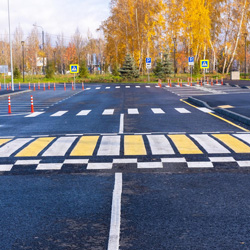Speed bumps, known by various names worldwide, are a crucial component of traffic safety measures. They play a significant role in controlling vehicle speed and enhancing road safety. In this article, we will explore the different types of speed bumps, their benefits, and their global variations. Whether you call them speed humps, speed reducers, or something else, understanding these traffic calming measures can help create safer roads.
What Are Speed Bumps?
Speed bumps are raised sections of road designed to slow down vehicles. Typically made from materials like asphalt, concrete, or rubber, they are installed in areas where controlling speed is essential, such as residential zones, school areas, and parking lots. Speed bumps are an effective traffic safety measure that encourages drivers to reduce their speed, thus protecting pedestrians and other road users.Types of Speed Bumps
There are several types of speed bumps, each serving a specific purpose and designed to meet different traffic calming needs:- Traditional Speed Bumps: These are the most common type, typically 3 to 6 inches high and about 1 to 3 feet long. They create a jolt that forces vehicles to slow down significantly.
- Speed Humps: Slightly longer and flatter than traditional speed bumps, speed humps are designed to reduce vehicle speed to a lesser degree. They are often used in residential areas to maintain a smooth flow of traffic while ensuring safety.
- Speed Tables: These are essentially elongated speed humps with a flat top. They are commonly used in areas where pedestrian crossing is frequent, as they provide a level surface for crossing.
- Rumble Strips: These are a series of small bumps or grooves on the road surface that create vibrations and noise, alerting drivers to reduce their speed.

